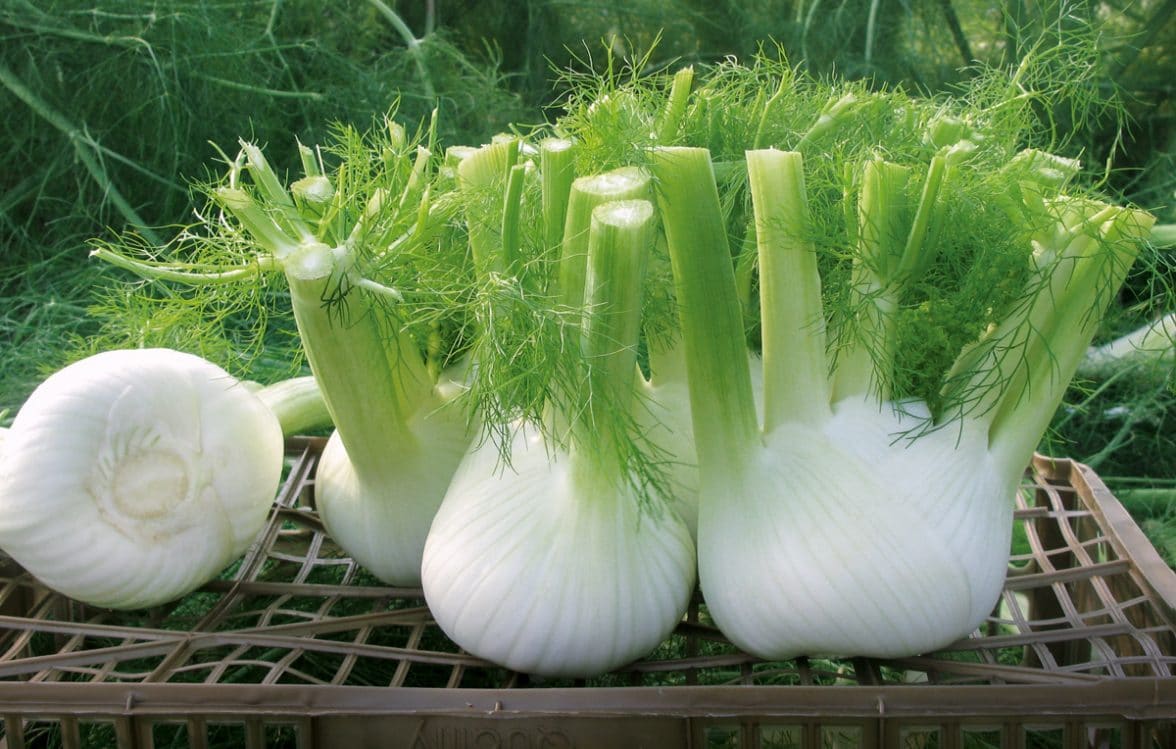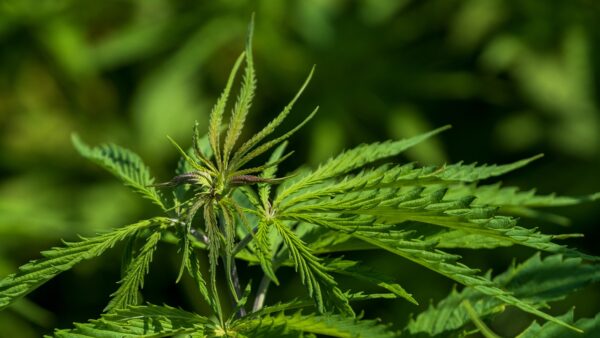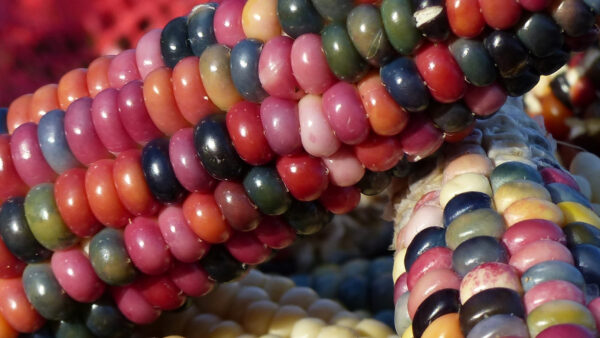Fennel breeding companies share what is important in creating new varieties.
Editor’s Note: In each issue of European Seed we take a closer look at one of the many crops that our European plant breeders are working on.
In this issue, we’re taking a closer look at fennel, originally very much an Italian crop that’s now spreading its wings throughout the world
In Europe fennel is grown for the bulb (also called “grumolo”) that is formed by the basal portion of the leaves (the sheaths) while in India and the Middle East they use the fennel seeds. Most breeding work in Europe is focused only on the bulb and not for seed production. Italy is by far the largest producer of fennel, mainly producing the type called ‘Florence fennel’, which is grown for its full whitish crispy bulb. European Seed asked several of the European breeding companies working on this crop what the main breeding targets are for fennel in Europe.
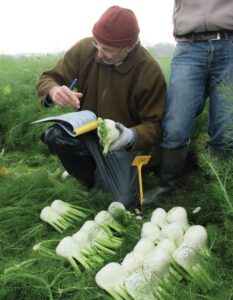
Breeding Targets
Jean-Marie Boussac, fennel breeder at HM.CLAUSE indicates that his company works primarily on selection specifically for this market. “Our program began in the 1970s. In 1985, we were the first company to introduce a hybrid variety (Carmo F1). Today, we cover all market segments, which requires trialling different varieties in different growing conditions – cycles from 65 days to 190 days and with or without tolerance to bolting as appropriate. Our main selection criteria are: a) physiological adaptation; b) quality of bulb scales; c) bulb shape and d) yield.”
Alessandro Schiappa, fennel breeder for Enza Zaden adds that in the past, fennel was considered a vegetable for autumn/winter consumption, but that recently things have rapidly changed: “The consumer demand has now increased to 12 months a year, a reason why seed companies have started very specialised research programs in order to respond to this new market need with a product that is able to face different types of weather conditions and which gives the grower a good yield, all bearing in mind that the quality is what really counts at the end when the consumer decides to keep on buying this product or not.”
Klaus Zutt, crop research manager for Bejo Zaden, says the main breeding target for ‘Florence fennel’ and other types of fennels is to develop an assortment that enables production of a high-quality fennel crop throughout the year. “Bejo breeders are constantly working to develop varieties for different seasons and specific areas. High resistance to diseases and high productivity are important criteria for the market introduction of a new variety. Other important characteristics are whiteness of colour, round shape and bolting tolerance,” says Zutt.
Luca Pallottini, fennel breeder at Monsanto, states that the main traits in their breeding work are: yield, bulb shape, rusticity (in Italy the main part of fennel is grown in the winter time, so the variety needs to show a good health both for plant and bulb also after many months with low temperature and heavy rains), sheaths overlapping (the bulb needs to be well closed, the overlapping of the sheaths has to be tight), bulb colour (white with small shades of green in the upper part), cold tolerance (mainly for Italy), bolting tolerance (mainly for North Europe), field holding ability (the ability to stay in field also after to have reached the commercial maturity stage some weeks keeping the marketable of the product) and disease resistances.
As with most crops, yield and disease resistance are among the most important targets. Arlindo Salvado, product manager roots and bulbs at HM.CLAUSE confirms that performance is certainly an important criteria, which has already progressed significantly with the arrival of hybrids. However, they consider product quality to be just as important, and their company has contributed significantly to progress in this area.
“HM.CLAUSE redefined the concept of bulb quality with our variety Tiziano F1. This hybrid has very quickly become the leading variety for the Italian winter segment for its great tortoiseshell quality: white, smooth, and firm, it has a round shape with a small core and good adaptability for extended use. This success story was possible only with the effective contribution of other services: marketing, communication, production, processing and quality control.”
Yield is an important breeding target in most crops, and a certain percentage of yield increase is usually achieved over the years. On average, yield increase in most crops has been around one per cent per year. Fennel seems to be somewhat different from that pattern.
“Over the past 20 years, there has not actually been an increase in yields in terms of tons per hectare, but rather an increase in terms of consistency and bulb quality,” says Boussac. “With these improvements, farmers have seen positive impacts upon harvesting and profitability.”
Pallottini adds that today 95 per cent of the cultivated fennel varieties are hybrids, with an average production of 40 tons of rough bulb per hectare. After cleaning a good hybrid gives around 18 tons of net product per hectare. In the past the OP varieties were showing an average production of only 35 tons of rough bulb per hectare. “The main change caused by the introduction of hybrids has been the uniformity of the crop and less variation in maturity. The biggest improvement was the percentage of product classified as first and second choices, which are the ones most required by the Italian market and better paid,” says Pallottini.
Schiappa agrees. “Since the late 1990s, there has not been any significant change in the average weight of hybrid bulbs. However, with OP varieties, harvesting a field required two to three passes of manual harvesting, while with today’s hybrids, the harvest can be done only once. This helps to increase business performance,” Schiappa continues. “The breeding activity has tremendously improved over the years especially in terms of plant and bulb quality; this has led to better yields. In Enza Zaden for example, Preludio (our leading variety) has brought a big quality change in spring and summer markets. Nowadays farmers can produce top-quality fennel in these difficult seasons as well.”
Roberto Zattoni, breeding manager for Bejo Zaden in Italy, paints a slightly different picture. “High productivity and high disease resistance are among our most important targets. An important step in yield improvement has been the switch from open pollinated varieties to F1 hybrids about 20 years ago. With our fennel breeding program we have been able to realise an average yield increase of two
per cent annually since our introduction of hybrid varieties in the mid 90s.
“In the past 20 years, Bejo’s breeding program has been able to keep up with the growing demand and market requirements through the constant introduction of newly improved varieties. And this could actually also be said for the market in general. The fennel seed market is a competitive marketplace. There are quite a few companies that offer good fennel varieties.”
Besides yield and disease resistance, there are several other goals that the breeders work on, Zutt adds. “Other breeding targets are agronomic improvements such as bolting resistance in summer cultivation, upright and strong leaves, a healthy and strong root system, standability, together with a white, smooth, crispy and consistent ‘bulb,’” Zutt adds. “Concerning the overwintering varieties, one of the main goals besides winter hardiness is to have a smoother and crispy skin through decreased fibre content.”
Regional Differences
In terms of growing regions, there are regional differences, but this seems to be mainly related to growing cycles. The longer the growing cycle, the larger the bulbs get (ranging from 350 to 800 grams each). In Italy, the long production cycles for winter crops are in the south, yielding larger bulbs, while yields per hectare are greater in the north. Italy is currently the largest producer of fennel in the world.
The Italian peninsula is characterised by a very mild weather in the south, ideal for growing fennel in the winter, but very hot in the summer. In terms of autumn and winter crops, the south is the place where a very high-quality fennel is produced and with very high yields in comparison to the central and north-central regions.
“The improvement in yield in specific areas actually correlates with the introduction of new improved varieties. We have put special focus on the development of varieties for springtime and summer production,” Zutt adds. “Consequently, yield improvements are now relatively larger in areas that produce in springtime and summer. High priority has also been given to the breeding of varieties for winter and overwintering production to provide growers with high quality varieties that have good winter hardiness and perform [reliably] during cultivation.”
Different Types of Fennel
Also in terms of type, there are some differences between countries and regions. In Europe, Italy is known as the specialist and serves as the model for the desired product form.
“The market focuses on achieving uniformity 12 out of 12 months per year. For export to France or other Northern European markets, the preference is for smaller bulbs of 300-400 grams per bulb. Elsewhere, in California for example, the desired product is a little different with an emphasis on trimmed, elongated bulbs for easier shipping and stalks as much as three times longer,” says Salvado. “In the Maghreb region, fennel is sold by the kilo (three to four pieces per kg) trimmed, and products of all calibre are valued.”
The different types of fennel really depend on the season, says Schiappa.
“In the north of Italy they can only grow early or very early types due to the weather conditions. In other areas, we can find all of the types. The main differences, apart from the commercial cycle of these plants, are the colour and the aroma. Early varieties have an extremely white bulb colour, absence of fibre and a very mild taste. Winter and overwintering varieties are surely more greenish and have more taste.”
Zattoni emphasises the differences in consumer preferences. In Italy the best quality is still a round, white, crispy fennel, whereas in Northern Europe a more flat-shaped version has been the standard. “This shape came with the introduction of the variety Zefa Fino, bred in the 1970s in Switzerland, which had the ability to grow reasonably flat bulbs due to the high level of bolting tolerance. Bolting tolerance is an important characteristic for cultivation of fennel in high latitude areas during summer. Fennel is very susceptible to day length in order to grow a decent bulb. During long day periods, like the summer period in northern Europe, the Italian ‘Florence’ types have a tendency to bolt quickly, even before they have started forming a bulb. For the northern regions, the best combinations available in the market are crossings of the Zefa Fino lines with Florence-type lines that have strong bolting tolerance,” says Zattoni.
According to him, the aromatic properties and contents of fennel can vary a lot. This is dependent on the period of growth and the method of cultivation. As the anise flavour fluctuates throughout the year, the target would be to have varieties with a consistent anise flavour all year round, more sweet than strong.
During the winter growing season, mainly in southern Europe (Italy and Spain), varieties with a good level of tolerance to cold temperature and disease resistance are required. During spring and summer growing periods, varieties with a good bolting tolerance, round shape and a good level of crispiness are required.
Historically, the type of Florence fennel that is grown for its bulbs was typically an Italian crop, but has now spread to many other regions of the world.
“If fennel is being grown in California, Australia or Argentina, it is likely the influence of Italians who have immigrated to those places. The increase in fennel consumption is undoubtedly related to its nutritional properties and health benefits. Still, this vegetable remains largely unknown with little or no consumption in Europe (except Italy), Asia and Africa. The production of fennel bulb in the Maghreb region is fairly recent, especially in Algeria where it has been increasing since the 1950s and today covers several thousand hectares,” says Boussac.
Bejo focuses its breeding on crop production to be used for fresh market and food industries like ready-to-use products, and possibly increasing its use for the juicing industry, all in conjunction with a healthier lifestyle, according to Zutt.
A Healthy Choice
Fennel is considered a very healthy vegetable, high in vitamins and low in calories. It is very rich in water (approximately 93 per cent) and has a low energetic value (10-15 calories per 100 grams of the edible part). In the diet it brings fibre (0.5-0.7 per cent of the fresh weight) but has also a high content of vitamins A and C. Additionally, fennel can be prepared through different cooking methods. It can be eaten raw, boiled, grilled, stir-fried, and as such is easily adaptable to different tastes and cooking habits in worldwide cuisine.
Increased popularity of the crop is due to the heightened attention by consumers to the health aspects of their diet. In particular to the fact that fennel is very poor in terms of calories, is an excellent source of vitamin C and has a very good content of fibre and others nutrients (folate, potassium, molybdenum, manganese, phosphorus, cupper). In addition, over the past 15 years, several scientific articles have come out linking fennel to antibacterial, antioxidant and anticancer activity.
Schiappa adds that the spreading of this crop at an international level is very much linked to healthier dietary trends. Now that fennel is becoming an ever more popular crop, one may wonder whether fennel breeding has been able to keep up with this increased demand.
According to Salvado, Italy’s production of fennel is stable. The total tonnage has increased over the last 15 years with the introduction of hybrid varieties. Furthermore, according to regional adaptation trials, varieties made for Italy are also suitable for use in other countries with similar climates and latitudes. This indicates that current programs match demand.
Schiappa agrees. “By filling the past gaps of the market, which were due to a lack of [availability of suitable] genetics, today’s breeders allow fennel to be grown 360 days a year and therefore the consumer demand is always satisfied.”
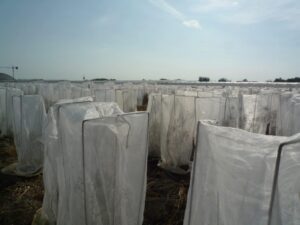
Resistances To Pests And Diseases
In terms of breeding for disease resistance, it appears that fennel is a very hardy species with relatively few pathogens affecting it. “We test our material in situ to eliminate all germplasm that might be vulnerable to disease,” Boussac adds.
According to Schiappa, one of the main problems in fennel is the susceptibility to winter conditions and to many pathogens that compromise many production hectares each year.
“The pathogens are different, from bacteria to fungi, and will remain a problem until farms pay the right attention to the rotation of the crops. Therefore, even if we have resistant plants as a tool, but we are not respecting the right agricultural practices, we will always have problems.”
The most dangerous diseases for fennel are Sclerotinia sclerotiorum that attacks the basal part of the bulb and damages the product, causing rotting and spots and the bacterium Erwinia carotovora for which it is hard to breed in resistance. Fennel is also impacted by Romularia foeniculi, a type of leaf rust. A relative newcomer is fungus disease Alternaria petroselini, first reported in Italy in 2007, which can cause a significant reduction in quality.
Investment Needed
Fennel is a crop that is continually being improved. Salvado notes that HM.Clause has decided to launch a mini-fennel under the brand name Babyfino that delivers more flavour in a smaller package.
Fennel can benefit from very advanced genetic techniques, on par with major crops such as tomato or cauliflower, says Schiappa. Many vegetable crops have been turned from self-pollinated or open-pollinated crops into hybrid crops. Fennel has recently undergone a similar process. At the end of the 1990s in Italy, there were essentially only open pollinated varieties. Today, 90 to 95 per cent of the professional growers are using only F1 hybrids because of their better yield and quality. This is equally true in other European countries.
If the breeding program is well developed and one has a good number of almost fixed parental lines to obtain a new fennel variety it will require five to six years, adds Pallottini. Instead, if you have to start from zero you need some 10 to 15 years.
Zutt says that the development of a new variety takes eight to 12 years, and production of seed and introduction to the market another three years. “In our breeding program we test and select thousands of lines annually, and as such we are able to introduce new varieties every year worldwide. Virgo F1 and Pegaso F1 are examples of recent introductions. These early season varieties hold strong during low temperatures and provide a healthy plant with a firm and round shaped bulb of an appealing white colour. It takes a lot of effort, time and expertise before such new varieties can be introduced to the market. The majority of the work takes place in our dedicated research centre for fennel, located in Italy, where we have a specialised fennel breeding team.”
Pallottini adds that in fennel they have started to use molecular markers. “They are a formidable tool that can speed up a lot the breeding work. We are using them for: i) checking the identity of varieties and parental lines; ii) assess the purity of varieties and parental lines; iii) speed up the reaching of a high level of homozygosity in the selection process of the parental lines. In the coming years, very probably, this tool can be used also for building of the heterotic groups also in fennel,” he says. “In the last 20 to 30 years Monsanto, with its brand Asgrow, has given a great contribution to the history of the fennel breeding developing important varieties like Trevi, Pontino, Pitagora and more recently Aurelio. Also today, Monsanto strongly believes in this crop and invests a lot of efforts in its breeding research program in order to fully satisfy the actual and future needs of all involved parties in the fennel chain: growers, dealers and final consumers.”


